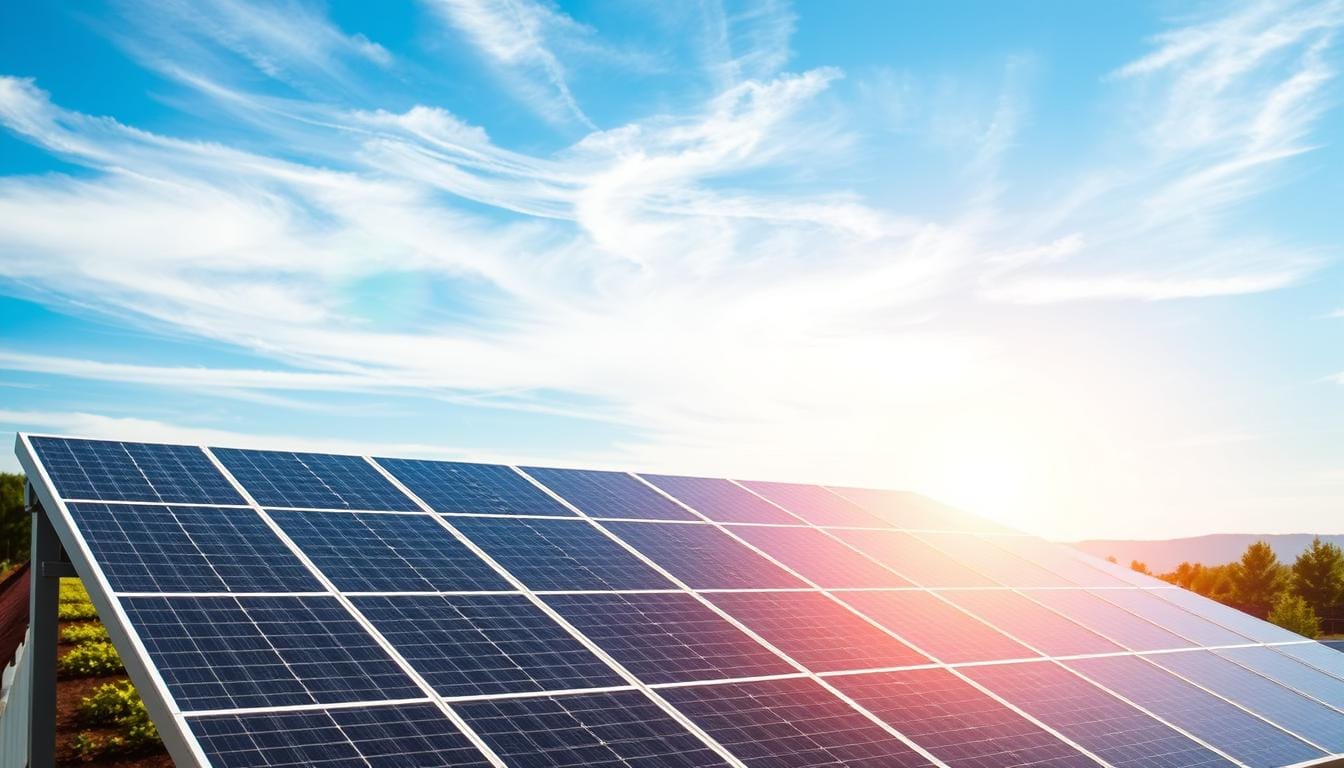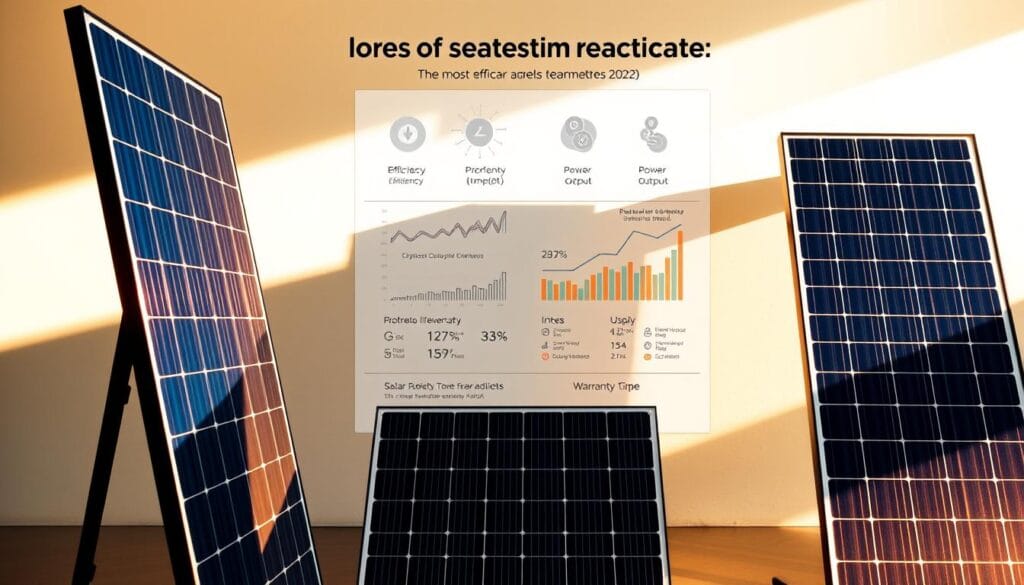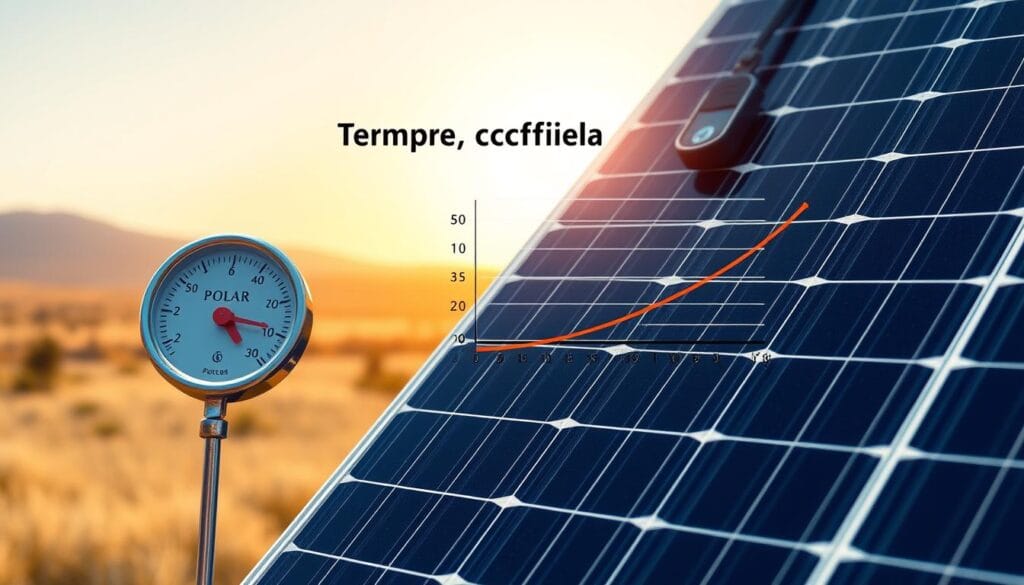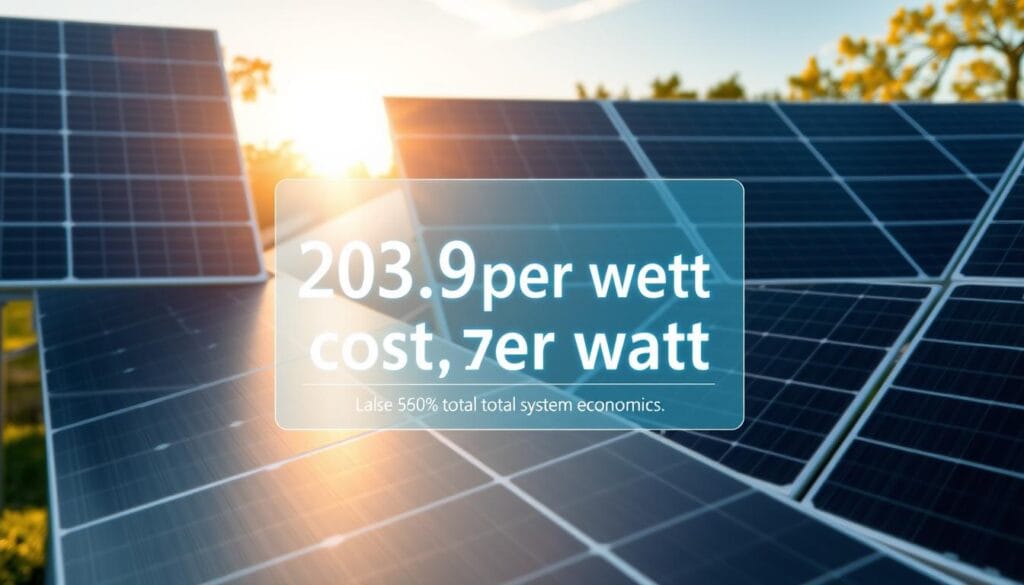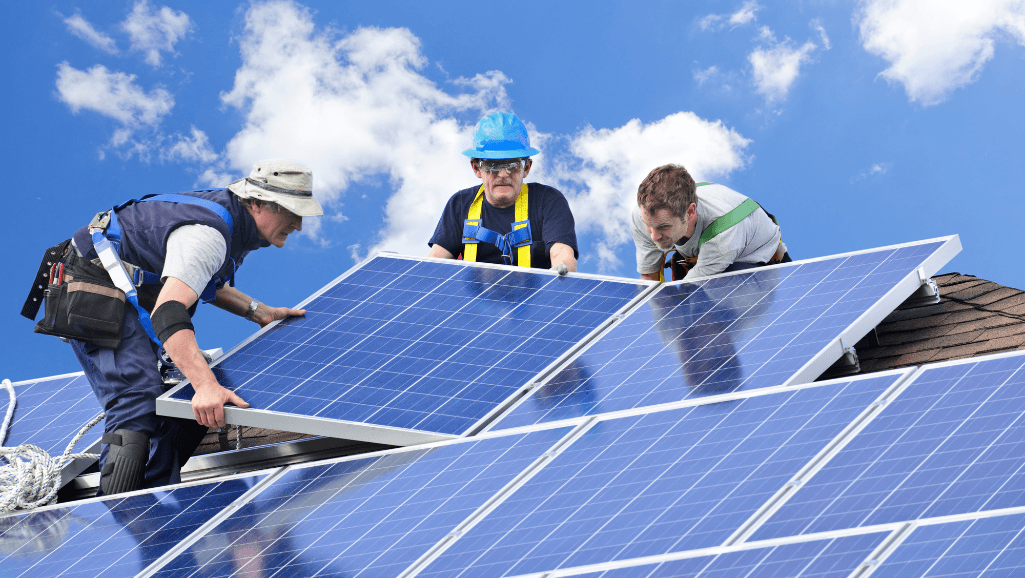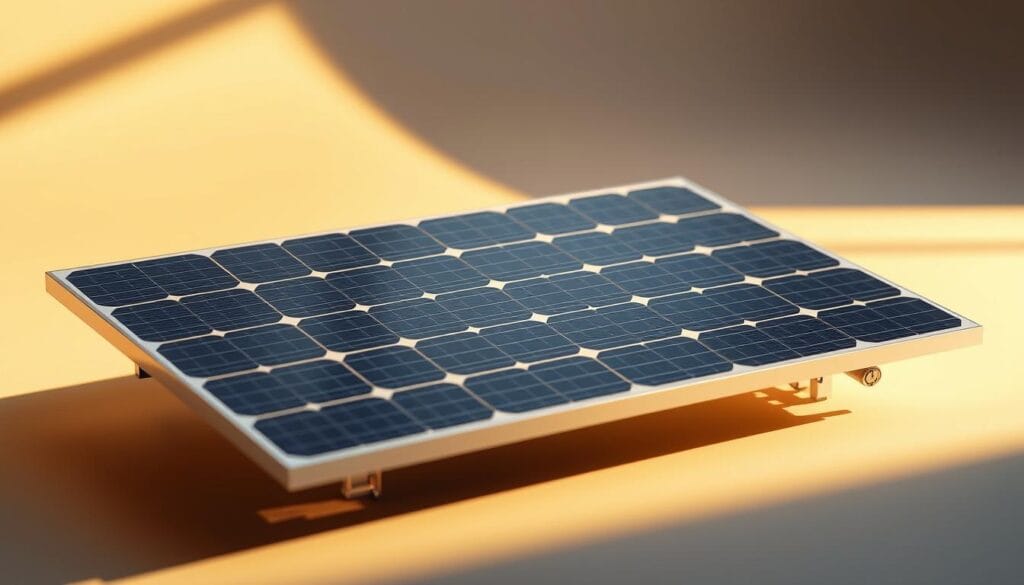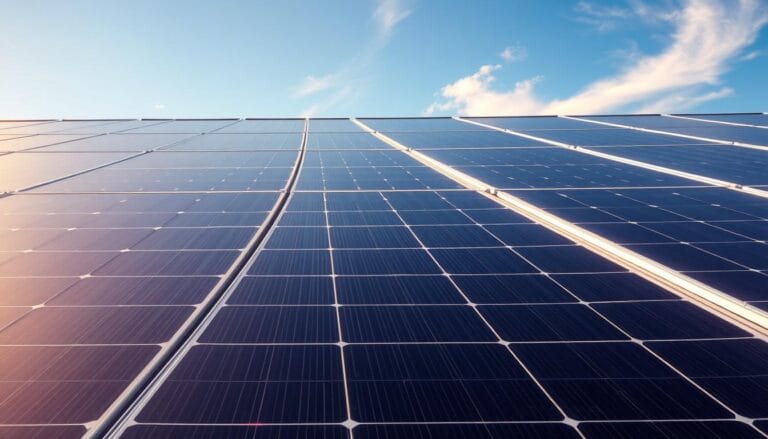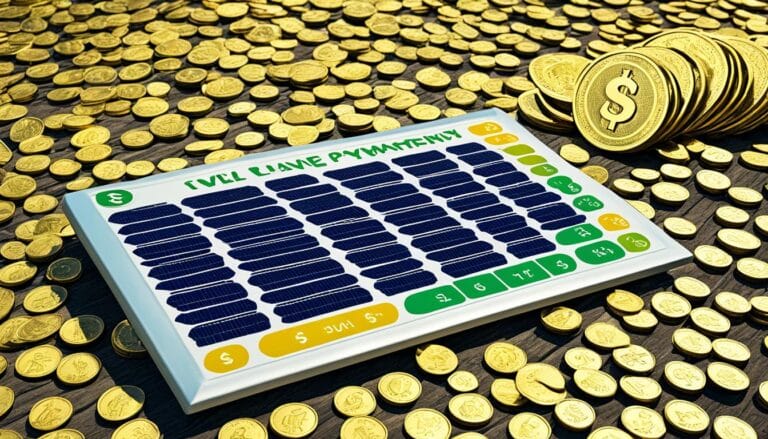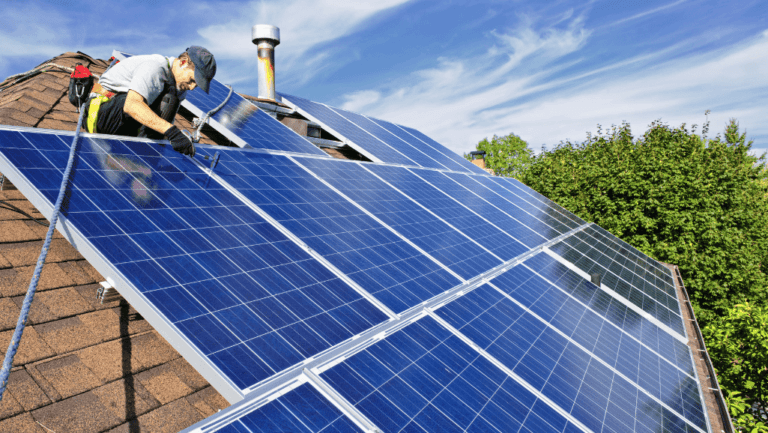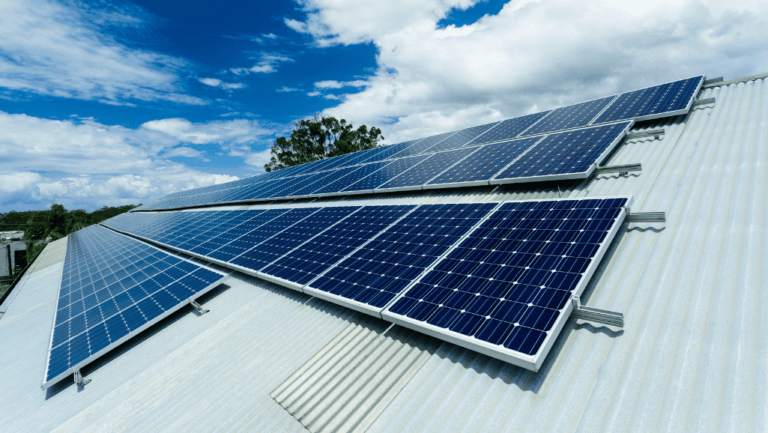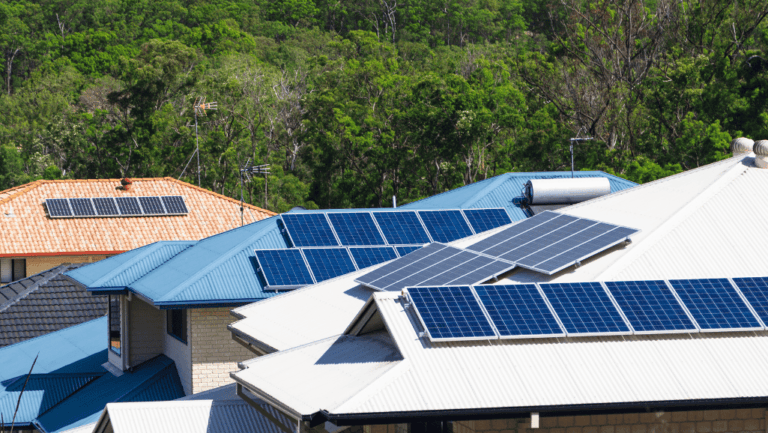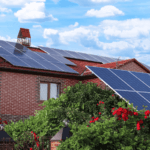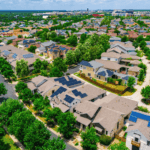Choosing the right roof array can feel overwhelming. This guide gives a clear, expert-driven path to picking a high-performing option that fits your roof and budget.
Independent data and lab metrics now separate truly elite modules from the rest. EnergySage’s July 3, 2025 analysis names Maxeon as a top performer with a 22.8% efficient 440 W Maxeon 6 module and industry-leading 40-year product and performance warranties.
Why that matters: higher efficiency and better temperature behavior mean more output per square foot. Strong 25–40 year warranties signal confidence in long-term durability and steady production.
Timing and installer choice are crucial. The 30% federal tax credit is time-sensitive, and a vetted local installer often delivers more lifetime value than tiny spec gains.
Key Takeaways
- Best Rated Solar Panels.
- Maxeon ranks high in independent tests for efficiency and long warranties.
- Efficiency and temperature performance drive real-world output.
- Warranty length (25–40 years) signals product confidence.
- Secure the federal tax credit and pick a reputable installer.
- Match panel tech and size to your roof, climate, and goals.
Why “best rated” matters in 2025 for residential solar
In 2025, a simple efficiency number no longer tells the whole story for residential rooftop systems. Home decisions hinge on availability, installer skill, and long-term support as much as on peak output.
Think beyond the spec sheet. EnergySage notes that system sizing and the installer you hire often affect lifetime yield more than small differences in module specs. The 30% federal tax credit also makes timing a financial factor; waiting months for marginal extra power can raise overall cost and risk.
- Define value: measured efficiency, verified durability, and a reliable warranty that shows a maker will stand behind the hardware.
- 2025 shift: N‑type tech is mainstream, incentive windows are finite, and supply shifts can change market access.
- Installer impact: a vetted local pro can improve output with smart layout, stringing, and shade mitigation.
- Warranty terms (25–40 years) protect long-term production and resale value.
- Brand credibility, U.S. presence, and third‑party tests shape real-world performance.
- Availability often beats a tiny efficiency edge when the tax credit timing matters.
Use ratings as a signal of balanced excellence — not just a race for top efficiency. Prioritize a well-rated module that is in stock and backed by a dependable installer to speed payback and reduce lifetime risk.
How we define and evaluate the best solar panels
We rate modules by generation density, heat resilience, and verified longevity under stress.
Performance
Efficiency and on-roof power
We measure panel efficiency and watts per square foot to show how much you can fit on a limited roof. Higher panel efficiency and tight packing increase practical power output and help lower system footprint.
EnergySage uses efficiency, W/sq ft, and the temperature coefficient to compare real-world yield across climates.
Stress testing and long-term resilience
Look for wind and snow load ratings and independent lab marks like PVEL Top Performer. Environmental tests — damp heat, thermal cycling, and mechanical stress — predict how panels handle harsh conditions.
Warranty and value
What warranties and economics really cover
Separate product warranty from performance guarantees and confirm year‑25 retention (many N-type modules promise 90%+). Factor cost per watt against W/sq ft to find real value per dollar.
Manufacturer credibility
Certifications, presence, and financial strength
Prioritize manufacturers with ISO certifications, transparent finances, and a U.S. footprint so the company can support service and parts. Validate claims across market data, lab scorecards, and installer feedback.
- Use year-25 guarantees and test results as proxies for slow degradation and steady long-term performance.
- Combine these factors into a simple score to compare modules on true production, durability, and cost.
Best rated solar panels: our 2025 short list
For 2025 homeowners, a short list of standout modules balances space savings, output, and service life.
Maxeon 6 — Leads for tight roofs and long-term reliability. EnergySage notes 22.8% efficiency, 440 W, a -0.29%/°C coefficient, and a rare 40-year product and performance warranty (≈88.3% at year 40).
REC Alpha Pure — The hot-climate champ. At ~22.2% efficiency and a ~-0.26%/°C coefficient, it holds production better in high heat and keeps summertime losses low.
Qcells Q.TRON — A strong U.S. option with 22.5% efficiency and solid 25-year coverage (≈90.6% at year 25). U.S. manufacturing in Georgia and an all-black look make it appealing for domestic content and curb appeal.
- Canadian Solar TOPHiKu6 — 22% efficiency, 450 W and -0.29%/°C; 25-year product and up to 30-year performance terms for higher wattage per module.
- Jinko Tiger Neo — 22.02% efficiency, 440 W and extended 30-year performance protection (≈87.4% at year 30); a value-driven choice for steady long-term yield.
How to use this list: weigh efficiency, temperature behavior, and warranty against roof size and timeline. If a top model is delayed, choosing a slightly lower-ranked option can preserve incentives and avoid schedule risk.
Compare top brands side-by-side: efficiency, output, and warranty
Side‑by‑side data helps you see which modules turn lab numbers into actual roof output. Use the comparison to pick two or three candidates that match your roof size, climate, and payback goal.
Panel efficiency leaders in 2025: N‑type BC, HJT, and TOPCon
N‑type back‑contact, HJT, and TOPCon architectures pushed residential panel efficiency above 22% and into the mid‑24% range. Clean Energy Reviews lists leaders like Aiko at ~24.8% and Maxeon Gen 7 near 24.1%.
Power output and watts per square foot: fitting more energy on your roof
Watts per square foot decide how much you can fit on a tight roof. A 22.8% module (Maxeon 6) vs. 22.2% (REC Alpha Pure) can be the difference between meeting annual usage or falling short.
Degradation rates and long-term yield: reading beyond the spec sheet
SolarReviews reports typical degradation rates around 0.25–0.40%/year. That spread compounds into large lifetime differences.
- Check warranty length and year‑end power guarantees from the manufacturer or company.
- Factor temperature behavior: REC’s −0.26%/°C and Canadian Solar’s −0.29%/°C change midsummer performance.
- Ask installers to model year‑25 production so you see how small specs affect real performance and market value.
Panel efficiency explained for homeowners
Understanding module efficiency helps homeowners see how lab numbers become real rooftop energy.
Module efficiency vs. cell efficiency: what really affects yield
Cell efficiency measures the wafer or cell under ideal lab conditions. Module efficiency is lower because gaps, busbars, and frames reduce active area.
Clean Energy Reviews notes module values use STC (1000 W/m², 25°C). That standard lets you compare an efficiency rating fairly across brands.
Why higher efficiency reduces array size and can speed payback
Modern N-type tech (IBC, HJT, TOPCon) narrows the gap between cell and module performance and pushes modules into the 23–24.8% range.
- Higher module efficiency trims required roof area and often lowers installation time.
- Denser arrays need fewer panels, cutting balance-of-system costs and speeding financial payback.
- Greater efficiency can shorten embodied-energy payback, reducing lifetime emissions per kWh.
Note: small efficiency gains have diminishing returns if roof space isn’t tight. Ask your installer to model area saved and expected production for your roof so you see real system benefits.
Temperature coefficient and real-world performance
Heat on the roof changes how much power a module can deliver on a clear afternoon. Understanding that shift helps you pick a product that keeps output steady when temperatures climb.
How heat cuts production and why a lower coefficient wins
Heat and on-roof output
As cell temperature rises above 25°C, power drops by the temperature coefficient per degree. A -0.26%/°C module loses far less midday power than one at -0.35%/°C in long, hot summers.
Clean Energy Reviews shows typical monocrystalline N-type TOPCon around -0.29% to -0.32%/°C, N-type IBC near -0.26% to -0.30%/°C, and HJT often at -0.25% to -0.27%/°C.
NOCT vs. STC: read your climate
NOCT ~45°C at 800 W/m² approximates real conditions because cells run 20–30°C hotter than ambient in full sun. Use NOCT and the coefficient together to estimate midsummer efficiency and avoid surprise clipping.
- Choose HJT or back‑contact designs where heat and long sunny runs dominate — they sustain performance better.
- Improve airflow and avoid black backsheets if you want cooler operation and slightly higher efficiency.
- Ask installers to model STC and NOCT scenarios so you see realistic summer output and long‑term production.
Warranties that protect your investment
A strong warranty turns a purchase into a long-term energy asset you can count on. Warranties matter because they turn manufacturer confidence into homeowner protection.
Product warranty vs. performance warranty: what each covers
Product warranty covers workmanship and materials — shipping, repair, and replacement when the physical panel fails.
Performance warranties guarantee power retention: a stated percentage at a specific year. For example, REC promises ~92% at year 25; Maxeon notes ~88.3% at year 40.
What 25–40 years really means for energy production
Target 25 years as a baseline. Leaders extend to 30–40 years with higher end-of-term guarantees.
- Understand degradation math: 0.25%/year keeps far more output at year 25 than 0.40%/year.
- Read fine print on labor, shipping, and replacement logistics — those affect downtime and out-of-pocket costs.
- Check if an authorized installer is required to activate enhanced terms.
- Keep serials, invoices, and monitoring data to speed any claim and protect resale value.
“A warranty is only as strong as the company backing it; prefer makers with transparent terms and a track record.”
Cost per watt, value, and total system economics
Compare the dollar-per-watt headline, then test it against real roof productivity. A $/W quote is a start, not the full picture.
Balancing upfront cost, efficiency, and long-term savings
Look past sticker price. EnergySage lists Maxeon at ~$2.84/W, REC at ~$2.53/W, and Qcells near $2.48/W. Those numbers matter, but so does how many watts fit per square foot.
Higher efficiency panels can raise module cost yet reduce total array size. Fewer modules cut racking, wiring, and labor — lowering balance-of-system costs and often improving payback.
When a slightly lower-ranked panel is the smarter buy
Supply delays or missed incentives can erase small spec gains. The 30% federal tax credit often outweighs a tiny efficiency edge if a delay costs eligibility.
- Use $/W as a baseline, then adjust for W/sq ft to measure roof productivity per dollar.
- Ask installers to model lifetime energy and cash flows — not only initial cost — to see true value.
- Check warranties and degradation: pay a bit more for lower loss rates when it yields steady long-term savings.
“A readily available, well-backed panel that fits your timeline often creates more value than a pricier, delayed alternative.”
Net takeaway: optimize for total system value. The right mix of upfront cost, efficiency, warranty, and timing wins in the U.S. market.
Match panels to your home: roof size, shading, and energy needs
Fit matters more than specs when roof shape and shade limit how much energy you can install. Start by mapping roof area and seasonal shade before chasing peak numbers.
For small or segmented roofs, prioritize high-efficiency panels so you meet yearly needs with fewer modules. Many U.S. homes require about 17–30 panels, but the exact count depends on module efficiency and layout.
Small roofs and complex layouts
Choose high-density modules to save space and reduce racking, wiring, and install time. Modules with strong low-light response and low temperature coefficients keep production steadier on tight roofs.
Shading strategy: microinverters, optimizers, and strings
Light shading can cut a string’s output by 50% or more. Use microinverters or DC optimizers to isolate a shaded panel and preserve the rest of the array.
- Use shorter, parallel strings to limit a shaded subarray from dragging down the whole system.
- Ask for a shade report and hourly production simulation to see real-world behavior before you buy.
- Blend aesthetics and function: all-black modules look clean, but keep airflow so heat doesn’t reduce power.
“Design for the roof you have, not the spec sheet you wish you had.”
Plan for future needs—EV chargers, heat pumps, or batteries—so the electrical layout scales. For guidance on sizing and counts, see this short primer on solar panel sizes.
The role of the installer: why fit and execution beat specs
How a system is installed often matters more than a few lab points on a spec sheet. A skilled crew optimizes layout, stringing, and airflow so panels deliver steady energy for decades.
Choosing vetted, local companies and workmanship warranties
Pick a local company with proven projects and clear service promises. EnergySage data shows vetted installers and correct sizing affect real-world yield more than small differences between modules.
- Hire local firms with 5+ years and in-house crews; they know permits, incentives, and climate needs.
- Verify workmanship and labor terms — installers often influence manufacturer warranty support.
- Demand a detailed design with stringing plans, monthly production estimates, and monitoring access.
- Check neat conduit runs, proper wire gauges, and code-compliant labeling to avoid later faults.
- Ask for references of similar roofs and recent projects to confirm on-roof quality and service.
“Execution protects long-term performance; the best spec sheet underperforms if installed poorly.”
Compare proposals by total value, not price alone. A higher-quality install can raise lifetime output and simplify claims in a shifting market.
Best rated solar panels
Top module choices in 2025 blend compact power density with long-term support you can trust.
Quick recap: EnergySage highlights Maxeon, REC Alpha Pure, Qcells Q.TRON, Canadian Solar TOPHiKu6, and Jinko Tiger Neo for combining space-saving density, low heat loss, and meaningful warranty terms. SolarReviews adds Canadian Solar, Qcells, REC, Jinko, and Trina for overall market strength and U.S. presence.
- Space and output: pick dense modules when roof area is tight to get more power per square foot.
- Heat and shading: similar headline specs can behave differently on your roof depending on temperature and shade.
- Installer and availability: local familiarity and stock often tip a close match toward lower risk and faster installation.
- Warranty and fine print: verify year‑25 guarantees, labor terms, and any authorized-installer conditions.
- System fit: confirm monitoring, inverter, and battery compatibility to ease future upgrades.
Shortlist two or three models that match your roof size and climate, then request updated quotes and production models. A confident, low‑risk choice gives steady efficiency and long service life at a fair cost — that is the true meaning of a high rating for household installations.
“Choose the product that meets your energy goals with minimal schedule and warranty risk.”
2025 technology trends shaping panel performance
Advances in cell design and module assembly are rewriting what homeowners can expect from rooftop systems. New formats and stacks are raising real-world yield while lowering mid‑day losses from heat.
N-type evolution: back-contact, HJT, and TOPCon push 24–25%+
N‑type architectures—back‑contact, HJT, and TOPCon—are now the premium route to higher module efficiency. Clean Energy Reviews lists leaders like Aiko NEOSTAR 3P54 at 24.8% and Maxeon Gen 7 near 24.1%, with Gen 8 and LONGi Hi‑MO X10 targeting ~25% by late 2025.
Back‑contact cells cut front‑side shading and improve hot‑weather performance. Larger wafers and tighter interconnects also squeeze extra watts into a standard roof footprint.
Perovskite tandem outlook: record efficiency vs. durability timelines
Perovskite tandems have hit lab records above 30% and small runs such as Oxford PV’s 24.5% modules show promise. Yet real-world longevity and scale remain the gating factors for wide adoption.
Manufacturers are validating durability and updating test protocols. Expect incremental efficiency gains, lower temperature coefficients, and cautious rollouts into residential sizes as the solar industry proves long‑term behavior.
- Commercial arrays often bring new tech first, then trickle to homes.
- Modular inverter platforms and future‑proof conduit make later upgrades easier.
- Stay flexible and lean on your installer for current availability and proven models.
“Technology leadership can shift quickly; prioritize proven performance and availability when planning a rooftop upgrade.”
Brand insights from the solar industry
Trusted rankings and dealer networks together reveal which makers deliver steady on-roof performance.
Marketplace and expert views: EnergySage and SolarReviews highlights
EnergySage and SolarReviews track overlapping names—Maxeon, REC, Qcells, canadian solar, and Jinko Solar—which strengthens confidence in those company choices.
EnergySage stresses installer selection and tax credit timing. SolarReviews ranks canadian solar highly while noting Qcells’ U.S. manufacturing pull, REC’s quality, and Jinko’s value proposition.
U.S. manufacturing and incentives: when “made in America” matters
Domestic production can speed delivery, simplify service, and sometimes qualify projects for incentives tied to domestic content.
- Shorter supply chains cut delay risk and ease warranty logistics.
- Manufacturers with U.S. plants often get installer trust for local support.
- Factor corporate moves—Panasonic’s April 2025 exit yet continued warranty support—into long-term confidence.
“Use cross-referenced rankings and installer feedback to validate your shortlist; brand prestige matters less than timely availability and solid warranty backing.”
Also see our shortlist and brand breakdown for deeper comparisons: top solar panel brands in 2025.
Conclusion
For a clear path in 2025, pick the option that pairs the highest on-roof efficiency with low heat loss and durable guarantees. EnergySage and SolarReviews agree that those traits, plus a trusted installer, drive real value.
Match tech to roof and climate. Use watts per square foot and temperature behavior to decide which panel fits your layout. Read warranty terms for year‑25/30/40 guarantees and labor rules before you sign.
Shortlist two or three candidates (Maxeon, REC, Qcells, Canadian Solar, Jinko) and ask installers for modeled year‑25 output. Be open to near‑equivalent alternatives if they speed installation and protect the 30% tax credit.
Next step: request updated, availability‑verified quotes so you can select the best solar panels and a great installer to deliver steady power and lasting energy value.


